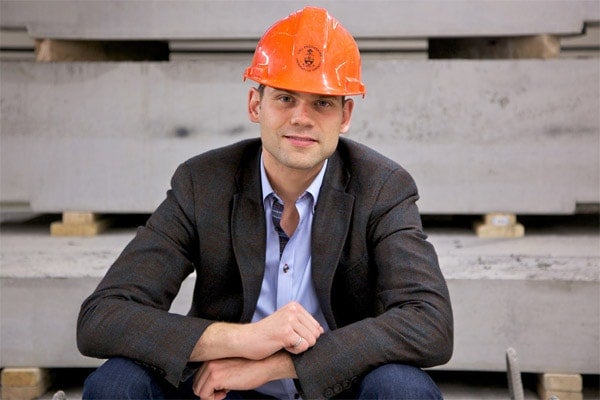
Engineering safer skyscrapers
Published: April 4, 2012
What should a Post-It note have in common with a high-rise building? If Constantin Christopoulos and Michael Montgomery have their way: the sticky stuff on the back.
The civil engineering professor and recent PhD graduate have spent ten years developing new technology that’s poised to revolutionize how tall buildings respond to wind and earthquakes. They recently spun off a company called Kinetica Dynamics to market their innovation.
“We are in discussion with some of the world’s leading structural engineers to incorporate the technology into the world’s tallest and most challenging engineering projects,” said Montgomery, “allowing buildings that are home to thousands of people to be safer and more habitable.”
It’s hard to miss the downtown building boom—in North America and abroad—as towers compete, reaching ever-higher. The industry, said Christopoulos, is increasingly churning out taller, slimmer buildings to accommodate a spike in demand for downtown living.
This trend, though, is at odds with the building techniques required to keep buildings safe and stable.
“As buildings get higher, they become more sensitive to sway from wind vibrations,” explained Christopoulos. Wind vibrations are not inherently unsafe but they can leave residents feeling ill and unsettled.
Earthquakes are another story. While building codes require structures to withstand earthquakes long enough for residents to evacuate, in many cases, the building itself is rendered unsafe or is too expensive to repair and ends up having to be demolished.
Right now, engineers solve the vibration problem in one of two ways—by making the structure stiffer or by installing a large mass on the roof that vibrates in a way that counteracts the vibration of the wind.
But these technologies come with drawbacks. Open, airy spaces are in demand so “the trend is to bring light into units, to have a lot of open space,” Christopoulos said. But stiffer buildings are bulkier and require more walls, resulting in less usable space for occupants.
And, in an environment where real estate can sell for thousands of dollars a square foot, these technologies cut into profit for developers. The masses installed on roofs—weighing more than 15 city buses—have to cover the entire structure and they take up the most valuable top-floor real estate. They also tend to become unreliable over time—as the structure cracks, which happens naturally and is normal, it can get out of sync with the mass.
Christopoulos and Montgomery came up with a solution involving damping—the process of taking vibrational energy and transforming it into heat. They’ve created a system that distributes damping throughout a building, using a viscoelastic material—similar to the adhesive on the back of Post-It Notes—bonded to steel. Their Wind-Earthquake (W-EQ) Coupling Damper absorbs vibrations from wind and, in the case of an earthquake, concentrates damage in specific portions of the damper that are easily replaced. It replaces concrete beams in the building and so does not displace any usable space.
The technology was tested and validated as part of Montgomery’s PhD studies. Subjecting the dampers to simulated wind and earthquakes required some of the largest-scale structural testing ever done in Canada. (Watch testing here.) Now Montgomery is adding “entrepreneur” to his resume as CEO of Kinetica Dynamics and is gearing up to pitch the technology worldwide.
Major grants from the Natural Sciences and Engineering Research Council of Canada and Ontario’s Centres of Excellence Program supported their research while the Innovations and Partnerships Office at U of T provided commercialization support and helped ensure the intellectual property associated with the technology was protected through patents. Kinetica Dynamics continues to receive office space and support through U of T’s Institute for Optical Sciences, a commercialization hub at U of T.


